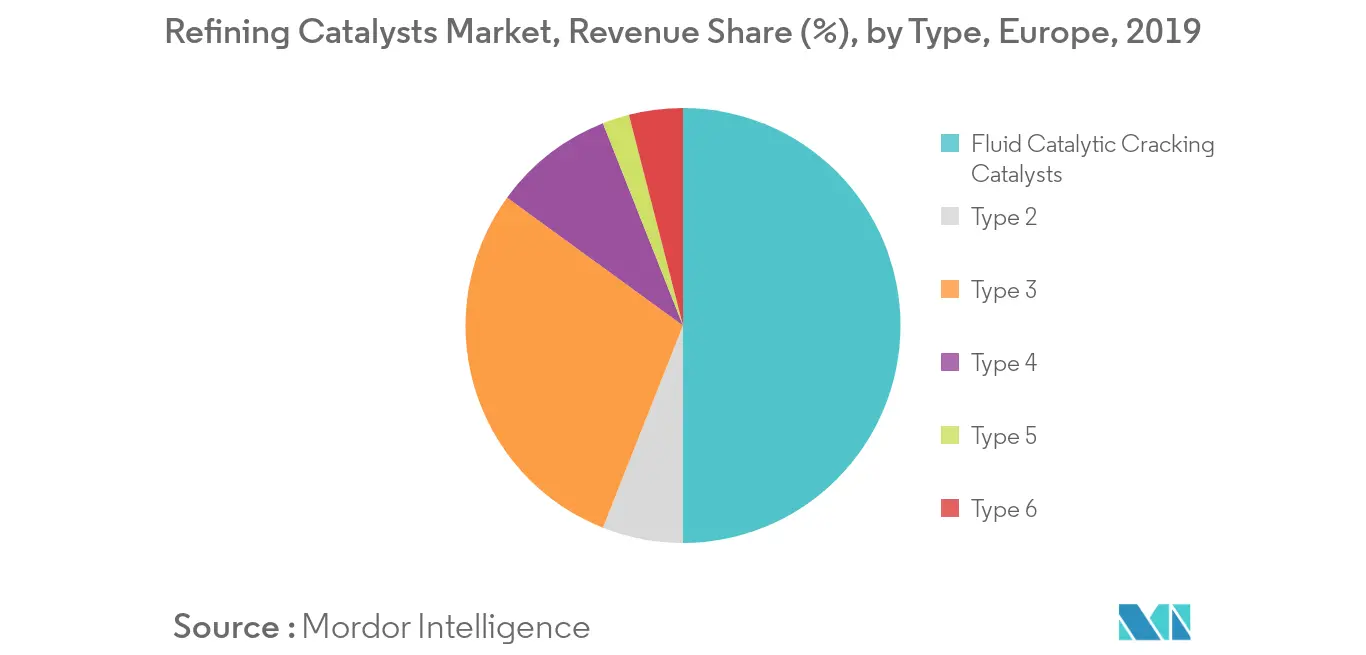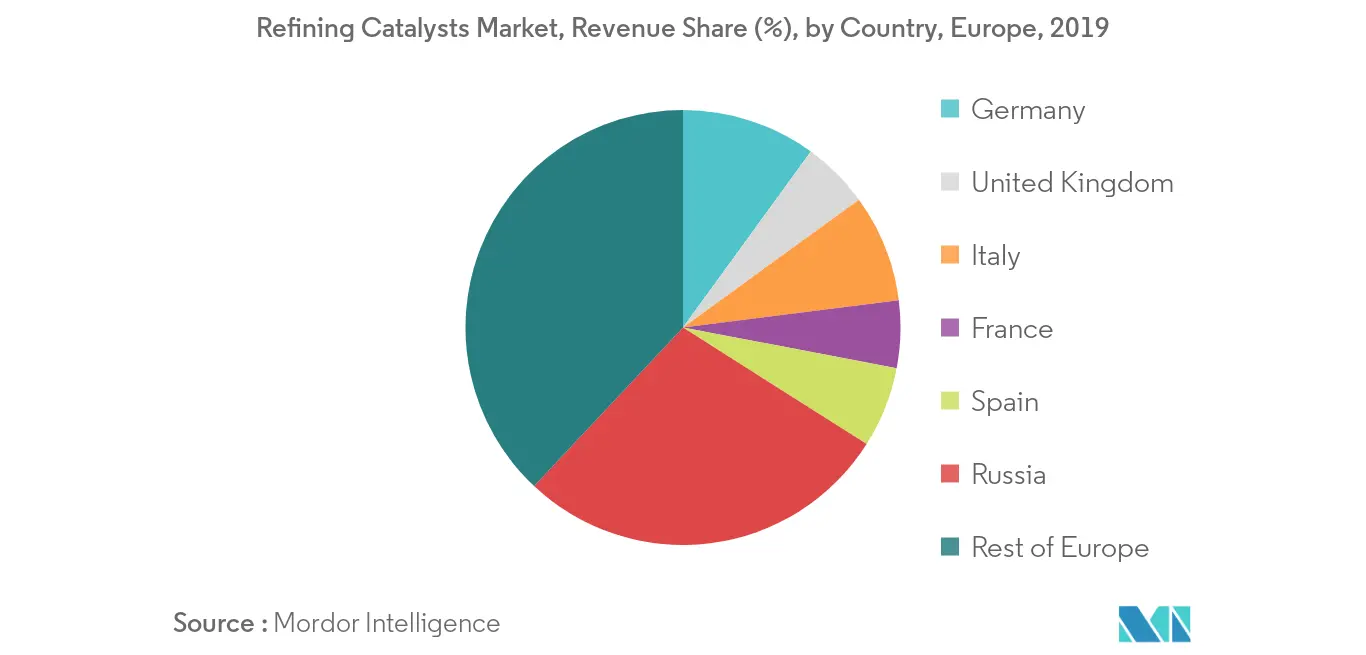Market Trends of Europe Refining Catalysts Industry
This section covers the major market trends shaping the Europe Refining Catalysts Market according to our research experts:
Fluid Catalytic Cracking (FCC) Catalysts to Dominate the Market
- The fluid catalytic cracking (FCC) process plays a crucial role in refineries while producing lighter products from crude oil.
- FCC unit helps in converting a variety of feed types, such as cracked gas oil, gas oil, deasphalted gas oils, vacuum/atmospheric resins, and others, into lighter and high-value products, such as diesel oil, jet fuel, LPG, kerosene, and gasoline.
- In the FCC unit, the feedstock is heated at high temperature and moderate pressure. Along with this, the feedstock is brought in contact with a catalyst which helps to break the long-chain molecules of the high-boiling hydrocarbon liquids into small molecules, which are further collected in the form of vapors.
- In the FCC process, the catalysts are used in the form of fine powders. Previously, catalysts, such as amorphous silica-alumina were used for cracking vacuum gas oils in the FCC unit. However, in the early 1960s, zeolite was commercially introduced as FCC catalysts, which had been a significant advancement in the history of catalytic cracking.
- Owing to the aforementioned factors, FCC catalysts are of great importance in propelling the market demand for refining catalysts in the forecast period.

Russia to Dominate the Market
- Approximately 20% of the GDP of the Russian economy is related to the oil & gas market, which has been highly volatile in the recent times.
- Germany imports crude oil majorly from Russia. Owing to the increasing exports from the country, the demand for oil in the country has witnessed a significant rise.
- The increase in demand for refining catalysts can be attributed to new optimizing technologies, and the debottlenecking of the existing refining complexes.
- Due to the above-mentioned factors, the market for refining catalysts in the country is projected to grow during the forecast period.


